May 12, 2024 | 02:51 GMT +7
May 12, 2024 | 02:51 GMT +7
Hotline: 0913.378.918
May 12, 2024 | 02:51 GMT +7
Hotline: 0913.378.918
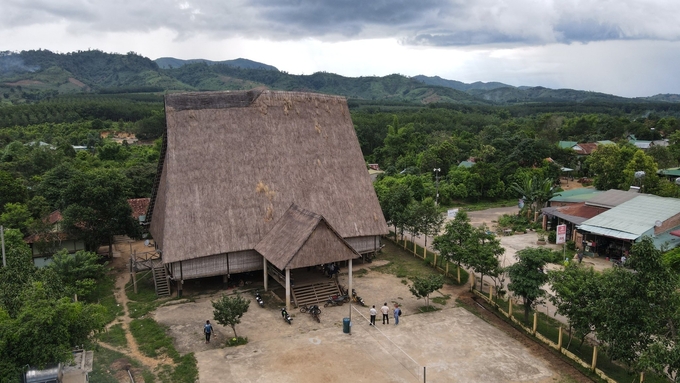
The communal house is surrounded by rubber forests and fruit orchards. Photo: Dang Lam.
“Kon So Lal village in Ha Tay commune is very beautiful, the traditional communal house of the village is also very majestic. Let's go there once." It was hard to resist the invitation of my colleague at the Gia Lai Newspaper, so I accepted.
That was the first time I went to Ha Tay commune, around the end of February 2011.
Me and my colleague rode our motorbikes about sixty kilometers from Pleiku city, around ten in the morning, we were in Kon So Lal village. In fact, since 2002, this is no longer a village because it has been moved out about three kilometers away, close to the center of the commune - according to the policy of the State. The village is deserted and empty of people, but I still feel that there is a very peaceful flow of life here.
It has been nearly ten years since the village was moved - since the beginning of 2011, but the houses here are still almost intact. The houses have absolutely no arrangement like the concept of "Cultural village" that I often encounter. Or rather, it is a very natural and extremely scientific arrangement of the Central Highlands people for thousands of generations: In the middle of the village is a spacious communal house, one side is about fourteen meters, the other is nearly ten meters with the original structure. The materials were completely taken from the forest: Wooden columns, wooden floors, walls made of bamboo, thatched roofs... Absolutely nothing made of metal was found, not even a single nail. Gathered around the communal house are the traditional stilt houses of the BahNar people, equally majestic, also made entirely of materials from the forest. At that time, the whole village had 85 houses, but only 5 had tiled roofs, including one chapel and four houses, and all were roofed with thatch. There are many stilt houses whose walls are made of clay mixed with straw, makes the walls turned into a bright red colour...
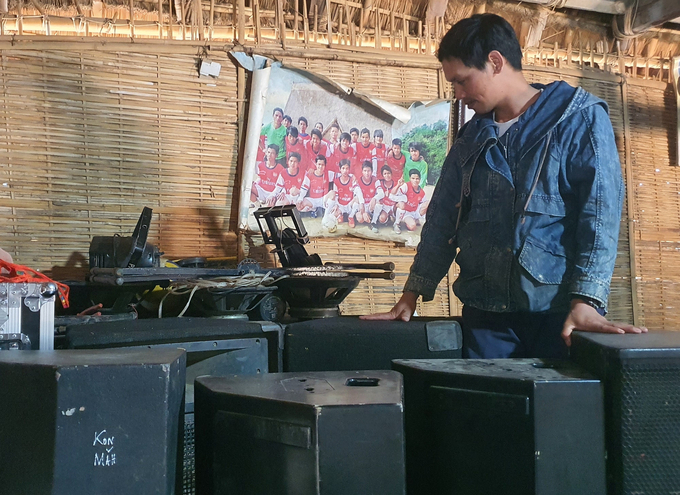
A corner of a communal house with modern electronic equipment, serving cultural activities for young people in the village. Photo: Dang Lam.
The communal house stands tall in the middle of the village, like a sacred fire that is always smoldering all year round. The 85 houses of the villagers are like 85 pairs of hands clasped together, surrounding the communal house, like an enlarged sinus ring, showing the gathering and solidarity of the villagers.
This is truly a traditional village because there is no arrangement of the concept of "culture". Or rather, the culture here has been shown through the natural overall layout of the village with the communal house in the center, surrounded by houses on stilts growing up without any order. It is the "no order" pattern that makes the village more cozy, showing the solidarity of the villagers in fighting together against the harsh nature, with the mysterious dark mountains and dangers lurking…
And I called Kon So Lal village - that day, as the "Fairy village"...
Then, a sad story suddenly happened to the villagers of Kon So Lăl, on a stormy afternoon on April 29, 2015. That day, a big thunderstorm with lightning hit a house in the village. 20 people's houses caught fire, the fire spread to a communal house built of rosewood. Fortunately, after that, it rained heavily so the rosewood pillars were not destroyed by the fire, but the empty house was left with only a wooden frame.
At that time, rosewood was very valuable, so the damage was estimated around many VND billions. After that fire, many people came to the village, asking to buy rosewood trees that had not been burned, or were partially scorched.
The sadness gradually subsided because after a long period of discussion, in the end, the village elders and the wisest elders of the village agreed with the villagers to sell the rosewood columns of the communal house for VND 4 billion, and only retaining the 4 largest rosewood pillars to build a new communal house.
And that was the story of many years ago.
Mr. Bien, the Chairman of Ha Tay Commune People's Committee: "Here, the proportion of BahNar ethnic people accounts for 96%. Although life is still difficult, the distance from the commune to the center of Pleiku city is more than 60km, but this place still preserves many unique traditional cultural features of the indigenous people such as gongs, the art of walking on stilts, and especially the traditional communal roofs built by the efforts of the people in the villages."
According to Mr. Bien, the commune is assigned to manage and protect 2,500 hectares of forest. The annual source of money for forest allocation and protection also helps people avoid difficulties. With 1,075 poor households, the ratio is still quite high, up to nearly 1/3, accordingly, the commune is implementing many integrated programs to support people to improve their lives and develop their household economy, including investment in tourism development.
About two months ago, I had the opportunity to return to Kon So Lal.
Mr. Duu, the current deputy village elder, received us in a spacious house right in the middle of the village. Slowly taking a long drag of his cigarette and slowly sipping a few sips of wine, Mr. Duu told us about the process of rebuilding this new communal house.
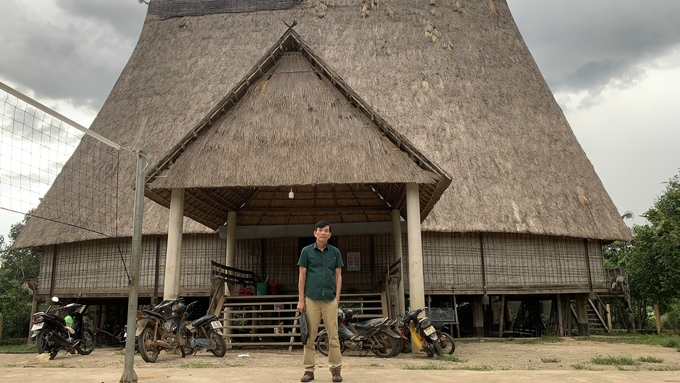
The author in front of the new communal house Kon So Lal. Photo: Dang Lam.
It took more than a year of preparation with many procedures submitted to superiors to request wood exploitation, then going to the forest to choose trees..., by 2008 the new communal house was completed after more than six months of construction, right on the new village's ground (before that, in 2002, Kon So Lah village was mobilized to relocate to the commune center to facilitate travel, medical examination and treatment, and children's education...).
Mr. Duu said, in order to build this new communal house, strong and skillful young men went to the forest to choose wood and cut trees. Meanwhile, women in the village were assigned to each contribute four bundles of thatch for roofing. The bamboo tubes brought back from the forest, were split, skillfully woven into large lattices, erected as walls, 4 rosewood columns were left from the communal house in the old village, now erected in the 4 main corners of the house. More than six months to build a communal house is more than six months for the whole village of Kon So Lal as if there was a big meeting. From the elderly to children, from men to women, everyone has their share of work - especially according to the assignment of the village elder.
“The new communal house is larger than the communal house in the old village, enough to seat more than a hundred people. Inaugurating the new communal house, the village decided to hold a big festival," Mr. Duu said.
The amount of money from the sale of rosewood poles was VND 4 billion before, the villagers bought a plow, a threshing machine placed right next to the communal house, people in the village who needed to grind and thresh rice only had to pay a little wages and money to run. machine. A new ambulance was also purchased to help villagers get to the next level when they are sick. The remaining VND one billion was deposited in the bank to earn interest and used for public purposes. In the village, anyone who is sick is also supported with VND 500,000...
From the sad story of last year's fire, other humane stories of the Kon So Lal village community were evoked from here. Each story is a pride of the village people, as proud as the communal house itself, quiet, full of power but extremely close and dear to every person in this village of Kon So Lal.
In the work "Communal house, the soul of the village", writer Nguyen Ngoc once said: That time, the crew made a film about the hero Nup in Kbang district, after many days of traveling to find an original BahNah village, without a traditional communal house to use as a filming set, so we discussed it with the district and commune and went to the village elder's house. Finally, the village elders agreed to build a new communal house in the village. “The communal house has just been built up high. The movie finished smoothly. When the work ended, we held a small, intimate ceremony, thanked the villagers, and respectfully presented that beautiful communal house to the village...".

One of the four remaining rosewood pillars in the old village communal house now stands in the most solemn position in the new village communal house. Photo: Dang Lam.
After more than a year of returning, the communal house that the film crew "gave" to the villagers that day, has become "a strange object in this village. Simply because it was not born exactly like a common communal house was born. It does not live, cannot live like a communal house…”.
“Meanwhile, the village's old communal house is still the same as the day we came here to film. Still small, very old, looking a bit shabby and humble. But it is very clear that it is a living object, warm and lively: The pillars, rafters, even the rafters, the walls are all covered with shiny black smoke. Every place is full of people. The very unique, unmistakable smell when we hang out in the houses of the Central Highlands: The smell of human sweat, the smell of kitchen smoke, the smell of heavy cigarettes, the smell of spent wine... And right in the middle of the day, in the middle of the house, a stove is still smoldering."
And he suddenly realized: "A year ago we did something very ungrateful and foolish: We gave the village a communal house. Give people what cannot be given." ("Nguyen Ngoc - works", volume 2, Writers' Association Publishing House 2007, Page 59- 60- 61).
During a recent trip back to Ha Tay, Mr. Bien, the Chairman of the Commune People's Committee, said that Ha Tay Commune has 9 villages and has 9 communal houses, including 5 traditional communal houses in the villages of Kon So Lal, Kon Mah, Kon Hoang Leh, Kon Bah, Kon Komó.
It can be said that in Ha Tay commune of Chu Pah district, there are the most beautiful communal houses in the Central Highlands, built by the talented hands of the ethnic community here. There really aren't many houses like that in this Truong Son area! Houses like that, villages like that in the Central Highlands now, perhaps only exist in... fairy tales!

Village boys living in the village's communal house. Photo: Dang Lam.
In the center of the villages, traditional communal houses with thatched roofs, wooden columns, and bamboo walls are more than 20 meters high, like large upside-down ax blades, proudly rising in the blue sky, like a challenge to the mysterious dark forests and mountains, as if to fight against diseases, wild beasts and the wrath of nature. It is also a tribute to Giang about the protection and strong will of the village community...
With only rudimentary tools in hand, they built a magnificent project. And every night, young people in the village go to the communal house to live and sleep there. The custom of sleeping in the communal house to guard and protect the village when necessary is still preserved here.
So we know that the value of the village's communal house is not only preserved in terms of material, but also contains many spiritual and cultural values of the community. There, the communal house is a precious asset because it was built by the whole community together, with a clear purpose, not given to or donated by someone.
I have been to many villages in this majestic Central Highlands. Every village has a communal house in the most solemn and most comprehensive position: in the middle of the village. But to be honest, finding a true communal house like the ones in Ha Tay commune is not easy! Because now, it is not difficult to see "communal houses" in new communes and rural villages that are much larger and more "colorful". But - as writer Nguyen Ngoc said, it does not have "the very characteristic, unmistakable smell when we hang out in Central Highlands houses: The smell of human sweat, the smell of kitchen smoke, the strong smell of cigarettes. The smell of can wine was gone… And right in the middle of the day, in the middle of the house, a kitchen was still smoldering.”
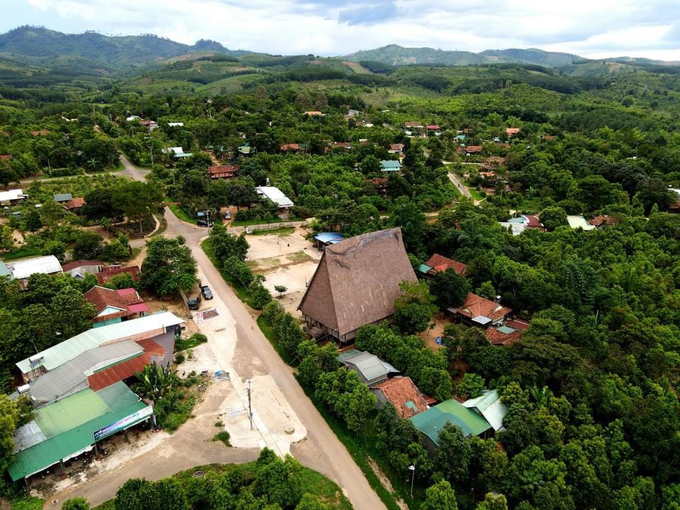
People are proud of the communal house. Photo: Dang Lam.
These "characteristics", in the traditional communal house of the BahNar people in Kon So Lal village, and in four other existing communal houses in Ha Tay commune of Chu Pah district, are still present every day: It is still a place for village elders and wise old men of the village to drink wine, to tell the village boys about the heroic stories of their village and their people; where the elders sit to discuss and make the most correct "Resolutions", so that the villagers can have a richer and fuller life; It is also a place for the elderly to have a lot of headaches when meeting and making a decision to punish an individual, or a family who has violated the village's rules. And, it is still the place where every night, the young men of the village gather for activities, then sleep right at the communal house - like a beautiful custom that has existed for thousands of generations of the BahNar people, of the Central Highlands...
Those are definitely the most beautiful houses in the Central Highlands!
Mr. Nay Kien, the Chairman of Chu Pah District People's Committee, said: "Ha Tay commune still has many difficulties. With the existing advantage of traditional communal houses and beautiful landscapes, we are orienting this place to develop tourism to contribute to improving people's lives."
Translated by Bao Ngoc

(VAN) Cuc Phuong National Park has rescued a northern buffed-cheeked gibbon, which is extremely rare, from a residence in Hai Phong.
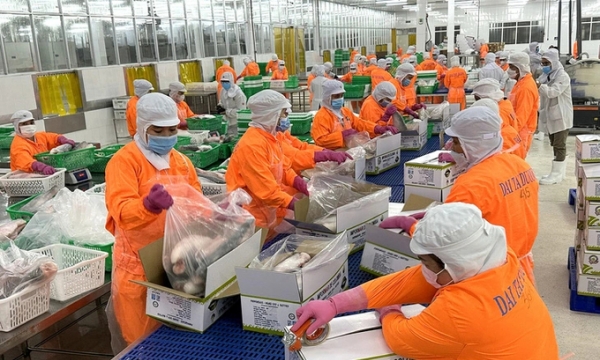
(VAN) 'This is an important step in reviewing documents and recognizing Vietnam's market economy status,' said Ministry of Foreign Affairs spokesperson Pham Thu Hang.
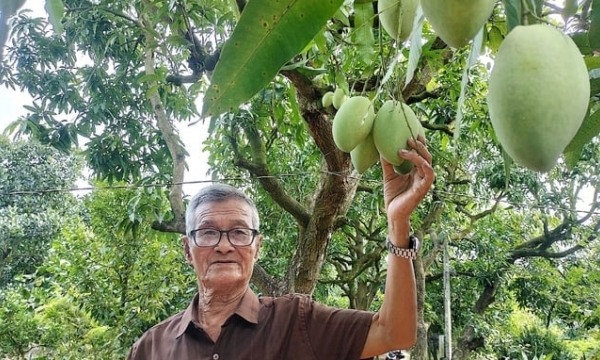
(VAN) The People's Committee of Tien Giang province has recently organized a conference to discuss the plan for organizing the Tien Giang Fruit Festival 2024.
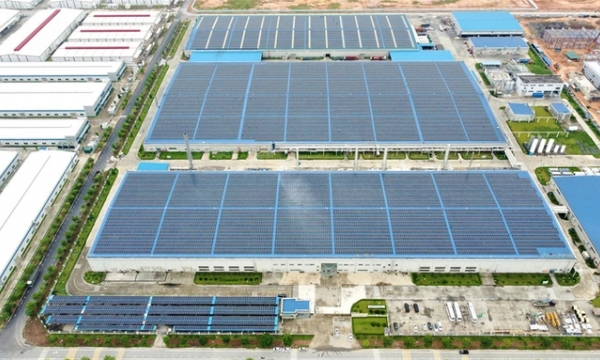
(VAN) Many domestic and FDI enterprises promote reducing carbon emissions, building carbon-neutral factories, and even tending to be energy-independent...
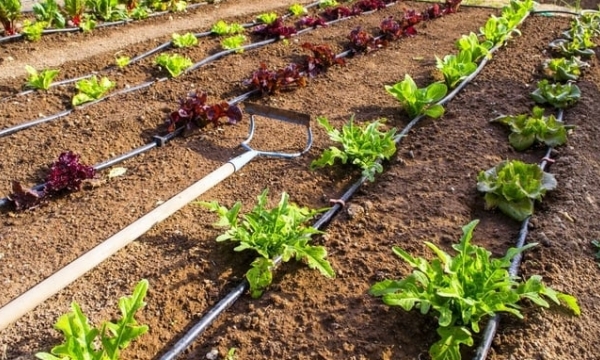
(VAN) Minister Le Minh Hoan believes that the keyword 'water-saving culture' of Israel, alongside technology and finance, has helped this country develop high-level irrigation ideas.

(VAN) Spokeswoman of the Ministry of Foreign Affairs, Pham Thu Hang, affirmed that Vietnam has yet to obtain sufficient information to assess the impacts of the Cambodian Funan Techo canal project.
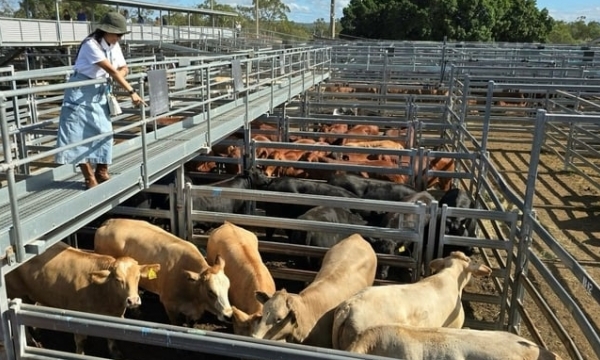
(VAN) A delegation of 22 representatives from Vietnam’s beef and cattle industry is gearing up for a mission to Australia, centered around the Beef Australia 2024 industry showcase from May 4-12.